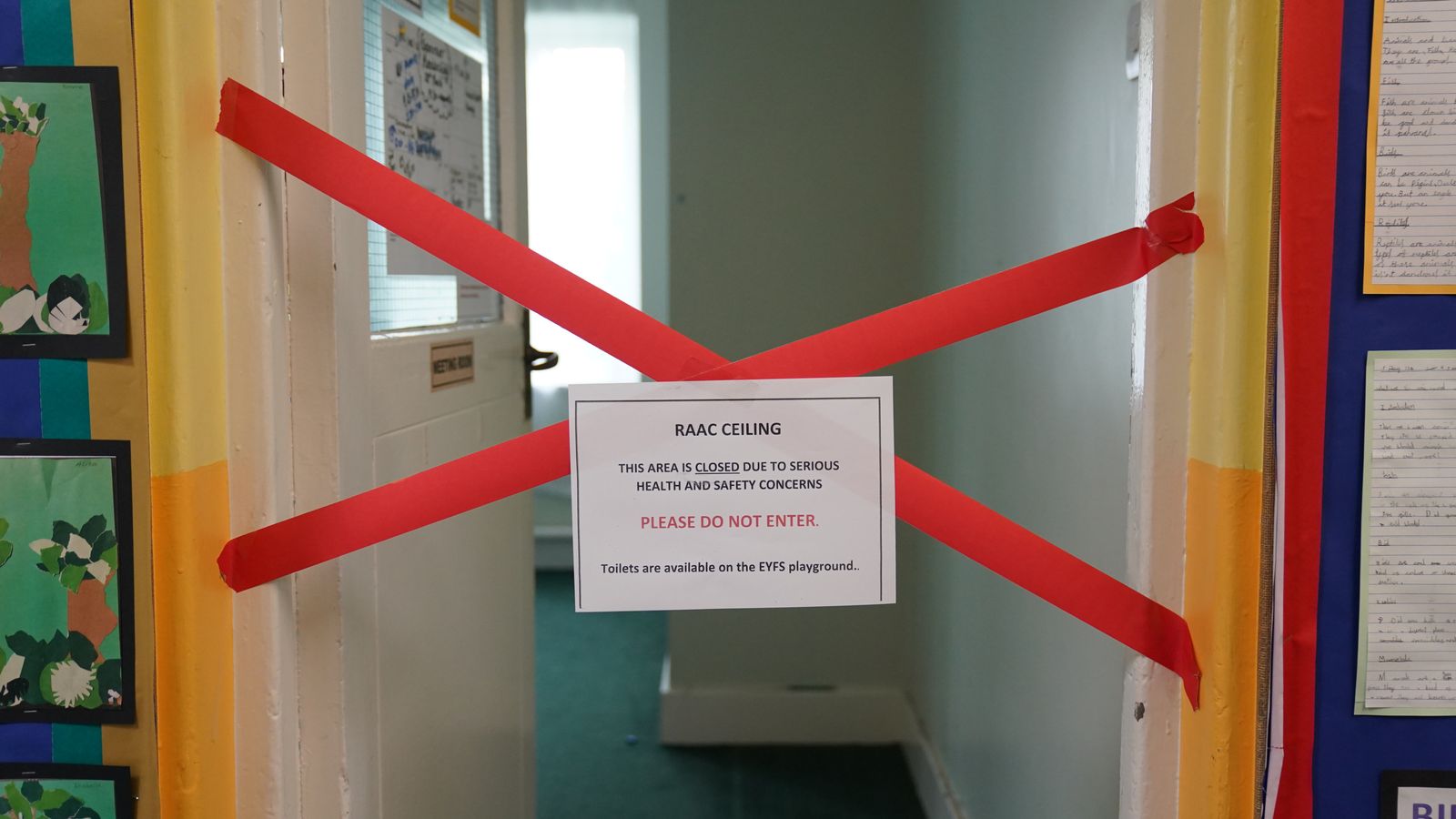Concrete that could be at risk of collapse has been identified in another 40 schools and colleges, the government has confirmed.
An update from the Department for Education said the reinforced autoclaved aerated concrete – known as RAAC – had been found in the buildings, bringing the total to 214 as of Monday.
The last update from ministers in September set the number at 174.
Please use Chrome browser for a more accessible video player
Politics live: Sunak asked whether he backs an Israeli ground invasion of Gaza
Education Secretary Gillian Keegan said 94% of pupils who attended the schools and colleges were still getting full-time face-to-face education “thanks to the hard work” of leaders.
But 12 settings have “hybrid arrangements” – meaning some students are having to carry out remote learning alongside in-person classes.
The National Education Union accused the government of “sneaking out” the latest figure, claiming schools and colleges were “nowhere near the conclusion of this saga”.
More school strikes in Scotland after Unison union members reject pay offer
Miami school receives complaints after pupils shown Winnie the Pooh themed horror film by teacher
Girls not enjoying PE as much as boys because of periods and low body confidence
And Labour’s shadow education secretary Bridget Phillipson said the “drip drip” of schools being added to the list was “yet more evidence of chaos from a Tory government that has no grip on the extent of crumbling school buildings”.
Please use Chrome browser for a more accessible video player
Ms Keegan said: “I want to reassure pupils, parents and staff that this government is doing whatever it takes to support our schools and colleges in responding to RAAC and minimise disruption to education.”
But the National Association of Head Teachers (NAHT) said many schools and colleges were “still waiting” for temporary classrooms and buildings to be put in place – adding that rebuilding plans were “even more nebulous”.
General secretary of NAHT Paul Whiteman said schools are having to repurpose “specialist facilities, dining halls, PE rooms, and spaces for after-school provision and wraparound care, which is having a huge impact on communities, provision and on schools’ income”.
He added: “While ministers have made promises over funding and support for schools, there is no clear timeline for when will work will be completed and there appears to be no end in sight to this crisis.”
The RAAC scandal erupted at the start of the school year, with thousands of pupils facing school closures and delays to the start of term after the government identified the material in their buildings.
Ministers said at the time that hundreds more schools could be affected, as they urged education leaders to return building surveys to the department to identify any suspected RAAC.
Ms Keegan came in for criticism over both her handling of the crisis and after being caught on camera bemoaning a lack of thanks for doing a “f****** good job” while other people “sat on their arses”.
Please use Chrome browser for a more accessible video player
The concrete was used extensively in the 1950s, 60s, and 70s in the UK, and has also been found in other public sector buildings, including hospitals and even the Houses of Parliament.
It is filled with air bubbles, meaning it weighs about a quarter of what normal concrete does. But it has also been found to become waterlogged and weak after a couple of decades.






